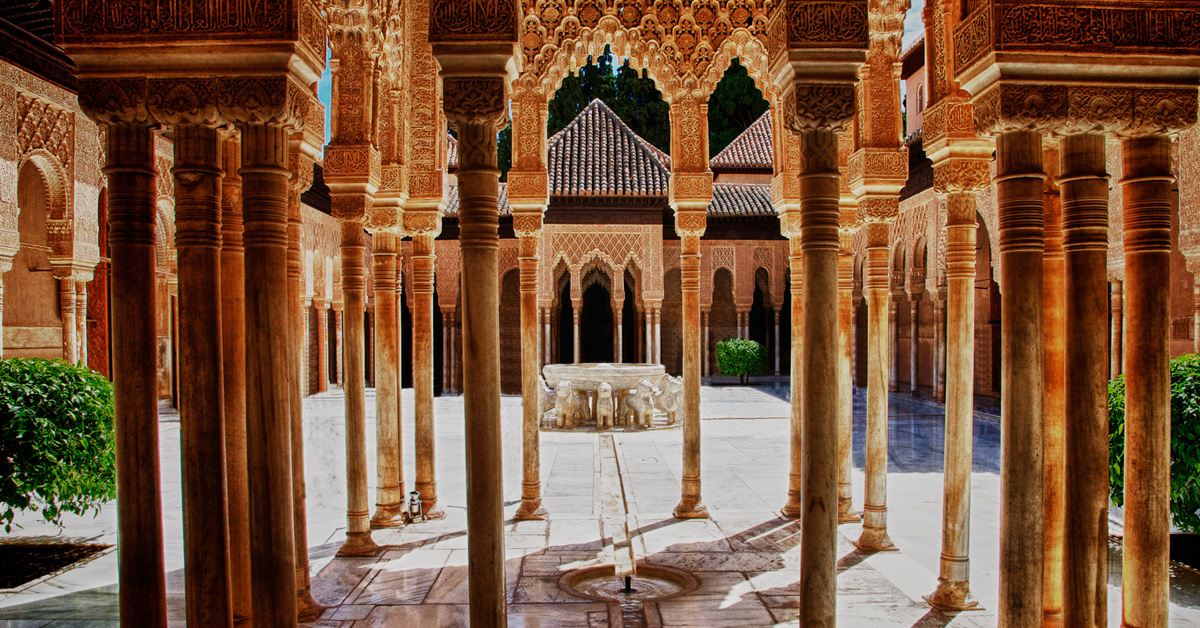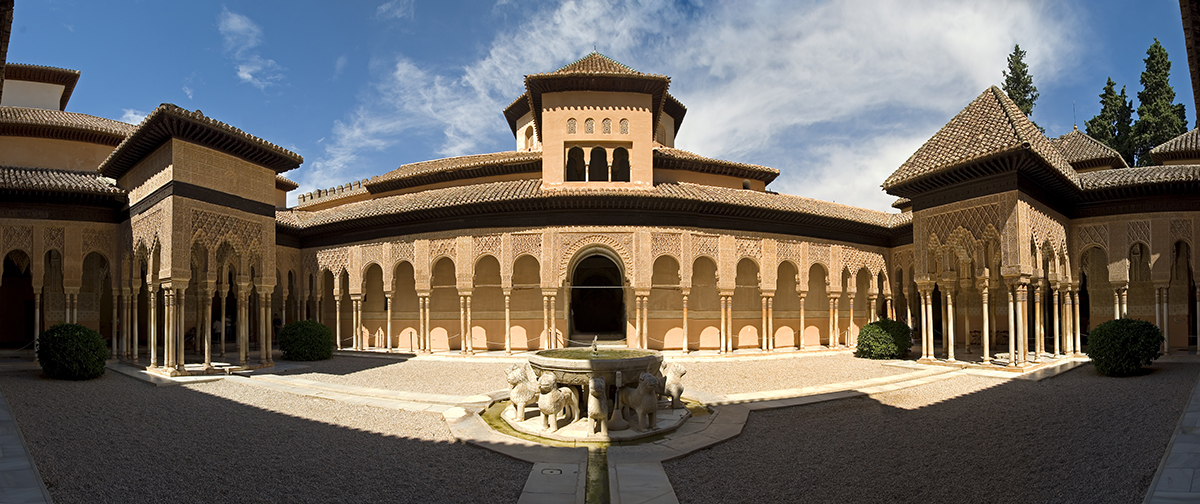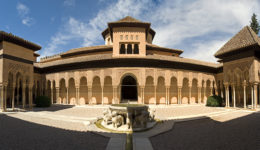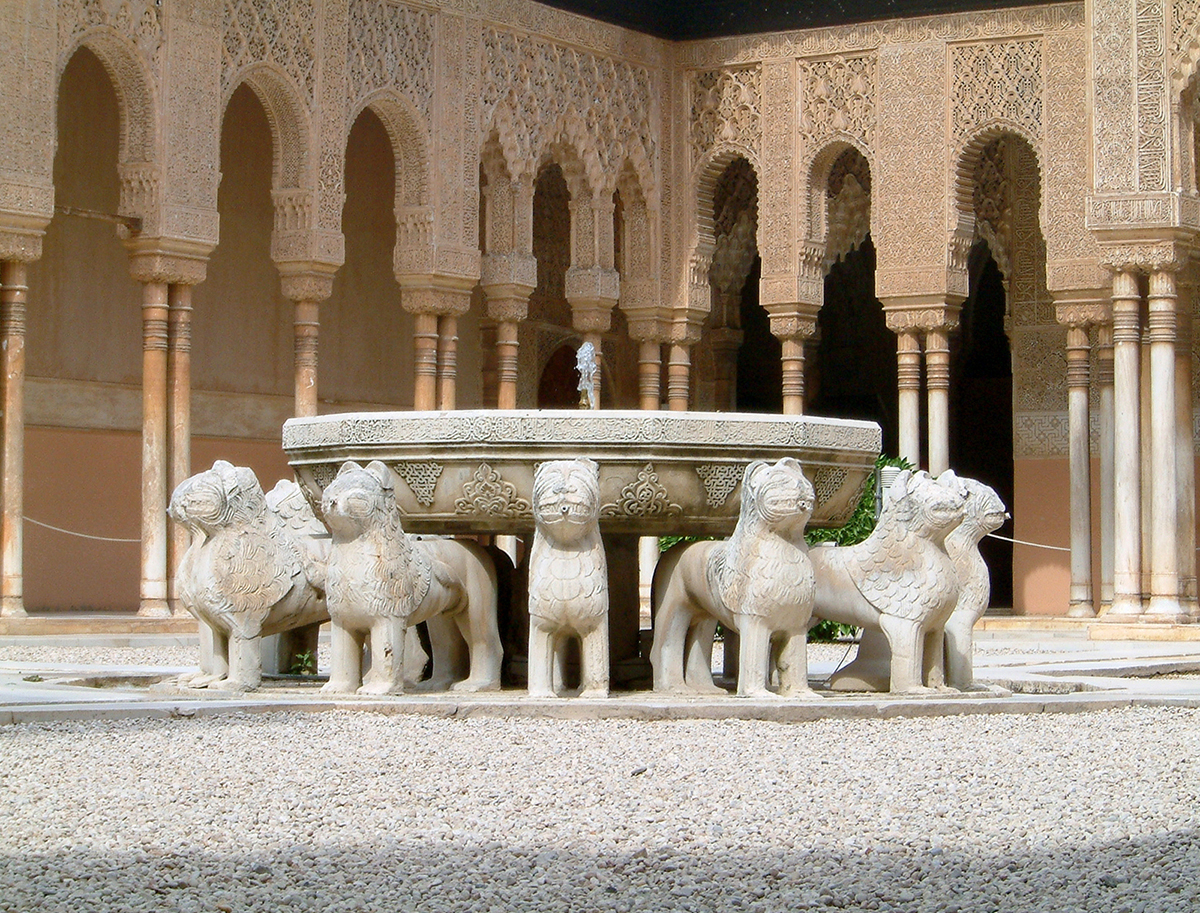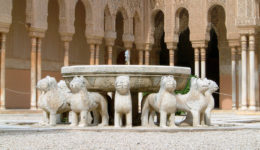 Alhambra palace and fortress complex, Granada, Spain. Photo © Zheka-Boss via iStock
Alhambra palace and fortress complex, Granada, Spain. Photo © Zheka-Boss via iStock
On a hill overlooking Granada, Spain is one of the most celebrated works of medieval Islamic architecture, and perhaps the only surviving site that displays the splendor of the last Islamic rule of Spain. Its history is complex and its functions diverse, but one thing is for certain: it is an architectural and engineering marvel.
The Alhambra complex has been built and rebuilt, modeled and remodeled for centuries, dating all the way back to the 9th century CE. Then it was simply a fortification built upon Roman ruins, until Spain’s Nasrid Dynasty initiated the construction of a grand palace complex in the early 13th century. The monarch Muhammad I ibn al-Ahmar knew that the compound would need running water, both for human sustenance and for the gardens and fountains he envisioned. But its position on an elevated plateau made that difficult.

The Alhambra is built on an elevated plateau. A complex water conveyance system was begun about 800 years ago. Photo © Slaunger via Wikimedia Commons
A supply was established by building a dam and aqueduct from the River Darro over six kilometers away. This channel, the Acequia Real, was the first to bring water to the palace and the beginning of a complex water network for the growing palace-city. Subsequent improvements included reverse qanāts, an ingenious irrigation system that takes river, run-off and subterranean water and channels it underground towards the hill, where it pools in a cistern beneath the complex. Recent discoveries suggest that complex hydraulic deviceswere then used to draw water up to the palace.
One of the most celebrated architectural design achievements in the complex is the Court of the Lions, constructed in the mid-14thcentury. This austere yet magnificent space follows a traditional charbagh plan, a quadrilateral garden arrangement of four platforms divided by four water channels, symbolizing the four rivers and four gardens of Islamic paradise.These channels converge in a central fountain whose basin is supported by twelve intricately decorated lion sculptures. The volume of flowing water is modest, but its effect is great within the carefully controlled space. A variety of porticos, side rooms, and halls decorated with crystalline muqarnas surround the open-air court.
Water, while an important symbol in Islamic gardens and faith, was also an important source of contemplation for Nasrid scholars. To quote from the inscriptions on the fountain: A running stream evokes the illusion of being a solid substance and one wonders which one is in truth fluid.
History is filled with civilizations who manipulated water to display their values, but few have done it as grandly and as elegantly as the designers of the Alhambra.






